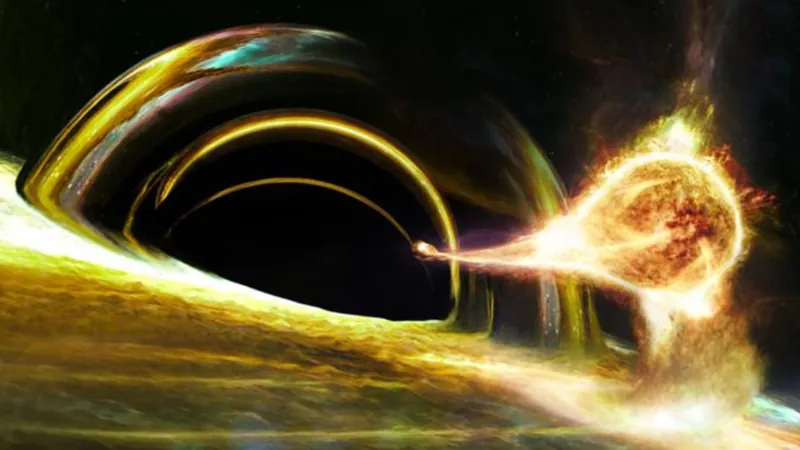
Star Dares to Dance with a Supermassive Black Hole - Returns for a Second Bite!
2025-07-23
Author: Wei
A distant supermassive black hole may have bitten off more than it can chew! Not only did the star it selected for a stellar meal escape its clutches, but it came back for a second encounter!
The thrilling saga unfolded when astronomers detected an astonishing double flare of light from the star, designated AT 2022dbl. The first flare was followed by an almost identical burst roughly 700 days later, suggesting this celestial body truly had a death-defying escape and a dramatic return!
An Unprecedented Cosmic Encounter
This groundbreaking discovery marks the first documented instance of a star surviving an agonizing encounter with a supermassive black hole and returning for round two. The big question remains: Did it survive its second rendezvous?
This revelation could revolutionize our understanding of "tidal disruption events" (TDEs), where black holes mercilessly rip apart stars. Instead of a one-time meal, this may indicate a longer cosmic performance, where stars indulge in the perilous dance with their giant cosmic predators.
Supermassive Black Holes: The Giants of the Galaxy
Supermassive black holes, weighing millions or even billions of times more than our Sun, reside at the core of large galaxies. TDEs occur when unfortunate stars stray too close to these celestial titans, succumbing to their immense gravitational pull.
This leads to a phenomenon known as "spaghettification," where stars are elongated and shredded like pasta as they are consumed, leaving behind a swirling mass of stellar debris. This material not only feeds the black hole but also produces spectacular flares of light that can last for weeks or even months.
A New Perspective on Stellar Meals
Recent observations of TDEs have raised eyebrows in the scientific community. Some display unexpected characteristics, with lower-than-anticipated brightness and temperature. The discovery of AT 2022dbl may suggest that some black holes prefer to savor their stellar meals rather than destroying them outright.
Now, the researchers are eager to find out if the daring star will make a third approach. If it survived the second encounter, we can expect another flare to ignite the cosmic stage around early 2026.
The Future of Stellar Encounters
"The question now is whether we’ll see a third flare after two more years, in early 2026," said Iair Arcavi, a team member from Tel Aviv University. A third flare would indicate that the second encounter was merely a partial disruption, challenging the way scientists understand these events.
Conversely, if no third flare appears, it would suggest that the star's return was indeed fatal. The consistent pattern of brightness between the first and second flares would mean that scientists will need to reassess their understanding of TDEs.
Regardless of the outcome, this mysterious celestial drama is poised to reshape our knowledge of these fascinating encounters and what they reveal about the massive monsters lurking in the centers of galaxies.




 Brasil (PT)
Brasil (PT)
 Canada (EN)
Canada (EN)
 Chile (ES)
Chile (ES)
 Česko (CS)
Česko (CS)
 대한민국 (KO)
대한민국 (KO)
 España (ES)
España (ES)
 France (FR)
France (FR)
 Hong Kong (EN)
Hong Kong (EN)
 Italia (IT)
Italia (IT)
 日本 (JA)
日本 (JA)
 Magyarország (HU)
Magyarország (HU)
 Norge (NO)
Norge (NO)
 Polska (PL)
Polska (PL)
 Schweiz (DE)
Schweiz (DE)
 Singapore (EN)
Singapore (EN)
 Sverige (SV)
Sverige (SV)
 Suomi (FI)
Suomi (FI)
 Türkiye (TR)
Türkiye (TR)
 الإمارات العربية المتحدة (AR)
الإمارات العربية المتحدة (AR)